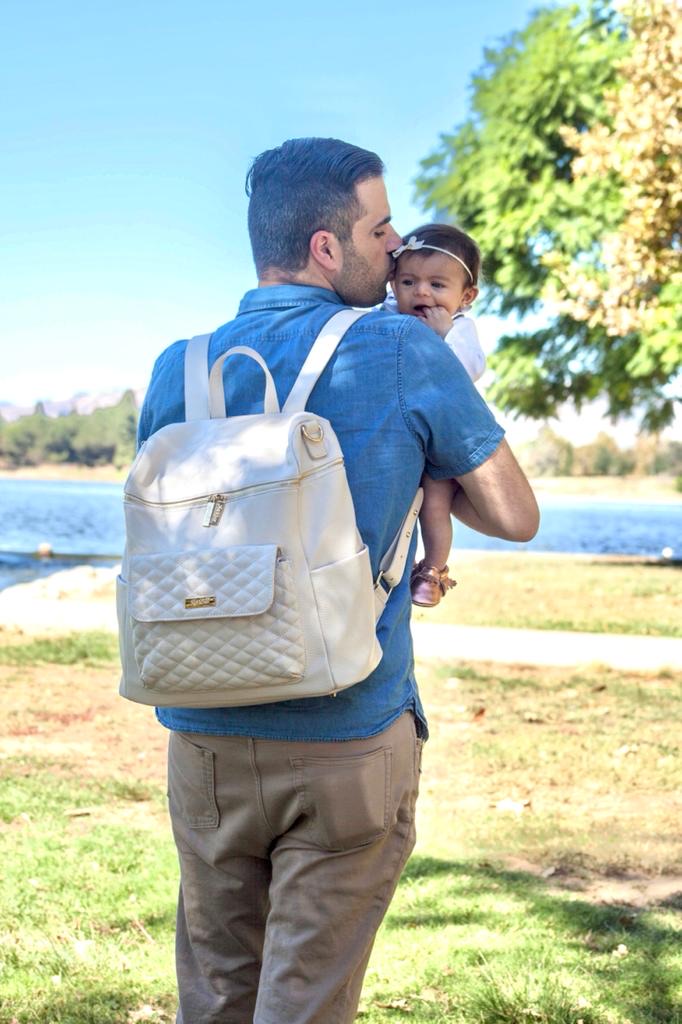
Fire Evacuation Tips for Parents
A fire can strike without warning, leaving families with only moments to react. For parents, ensuring the safety of their children is an overwhelming priority, but emergencies often create chaos and panic.
The best way to protect your loved ones is to plan and prepare for the unexpected. With proper steps, you can minimize risks and focus on protecting your family.
This blog post provides essential evacuation tips to help parents navigate the dangers of fires, from creating a detailed evacuation checklist to executing an emergency evacuation plan confidently.
Let's get started!
Why Preparation Is Critical
Every second counts in a fire. Fires spread quickly, leaving families with only minutes to escape safely. For families, having a clear fire evacuation plan can make all the difference between safety and tragedy.
Planning reduces panic and ensures that every household member knows what to do. Children, in particular, benefit from clear instructions and regular practice. Let’s explore how to prepare for a fire evacuation effectively.
Step 1: Create a Family Evacuation Checklist
A thorough evacuation checklist is essential to keep your family prepared and organized during a fire. Planning ensures everyone knows what to do and where to go if you need to evacuate.
Identify Escape Routes
Every room in your home should have at least two escape routes, typically a door and a window. Walk through these routes with your family and ensure all exits are easy to access and open, even for younger children. Clear any obstructions to provide quick and safe movement.
Choose a Meeting Point
Select a safe outdoor location where your family can meet after evacuating. This could be a neighbor’s driveway or a nearby park. For larger-scale evacuations, establish a secondary meeting point, such as a relative’s house or a designated community shelter, where you can regroup if separated.
Prepare Emergency Contacts
Make a list of important phone numbers, including those of family members, friends, and local emergency services. Teach your children to use these contacts if they're separated during the evacuation.
Review Special Needs
Consider your household's unique needs. Families with infants, elderly relatives, or pets should plan for additional care. If someone in your family requires medical devices or prescription medications, include these in your preparations.
Practice Fire Drills
Regularly practicing fire drills is crucial so everyone knows what to do in an emergency. Teach children to stay low to the ground to avoid smoke inhalation and to “Stop, Drop, and Roll” if their clothes catch fire. Repetition builds confidence and reduces panic during a real emergency.
Step 2: Pack an Emergency Evacuation Kit
An emergency evacuation kit is a grab-and-go bag filled with essentials you’ll need during and after a fire evacuation. Preparing this kit can save precious moments when you’re under pressure.
Essentials for Survival
Include basic survival items like bottled water, non-perishable snacks, and a flashlight with extra batteries. These will help keep your family nourished and safe if you’re away from home for an extended period.
Important Documents
Pack copies of critical documents such as identification, health insurance cards, and property deeds in a waterproof folder. These are essential for accessing resources and managing post-evacuation needs.
Comfort Items for Kids
Familiar items, like a favorite stuffed animal, toy, or blanket, can help ease anxiety for younger children during the evacuation. Diaper bags, wipes, and formula are essential for families with infants.
Medical Supplies
Pack a fully stocked first-aid kit and any prescription medications or medical devices your family may need. Also, remember to pack extra eyeglasses, contact lenses, or hearing aids if necessary.
Technology
Include a portable phone charger and a small battery-operated radio. These tools are invaluable for staying connected and informed during an evacuation.
Step 3: Communicate and Stay Informed
Clear communication and access to reliable information are critical during a fire. Keeping your family informed and connected can help reduce confusion and keep everyone safe.
Follow Local Alerts
Sign up for local emergency alert systems or apps that provide real-time updates on fire conditions and evacuation orders. Monitor the news via radio, TV, or social media to stay aware of the latest developments.
Always follow evacuation orders immediately, as delaying can put your family at greater risk.
Stay Calm and Reassure Children
Children look to adults for guidance during emergencies. Explain what’s happening and what they must do using simple, reassuring language. Encourage children to practice evacuation drills often so they feel confident and prepared.
Notify Friends and Neighbors
Let friends, neighbors, or extended family know when you’ve evacuated and where you’re headed. Offer assistance to neighbors who may need extra help, such as elderly individuals or families with small children.
Step 4: Execute Your Fire Evacuation Plan
When it’s time to evacuate, quick and decisive action is crucial. Following a clear fire evacuation plan will help keep your family safe.
Leave Immediately
Once evacuation orders are issued, don’t wait to see if the fire gets closer—leave immediately. Grab your emergency evacuation kit and head to your designated safe location.
Wear Protective Clothing
Wear long sleeves, pants, and closed-toe shoes to minimize burns and injuries. Wear a mask or a damp cloth to cover your nose and mouth to filter out smoke.
Stick to the Plan
Follow the escape route you’ve practiced. Avoid shortcuts or blocked roads, and drive carefully, staying alert for emergency vehicles or other hazards.
Prioritize Safety Over Belongings
Leave non-essential items behind. While it may be tempting to grab personal possessions, your family’s safety should always come first. Remember, belongings can be replaced, but lives cannot.
Post-Evacuation Tips Safety
After you’ve evacuated, there are additional steps to ensure your family remains safe and supported.
Monitor the Situation: Stay informed by monitoring official channels for updates on fire conditions. Return home only when authorities declare it safe to do so.
Seek Shelter: If you cannot return home, locate a nearby emergency shelter. Shelters provide essential resources like food, water, and medical assistance for evacuees.
Conclusion
Fires are unpredictable, but you can keep your family safe with preparation and some evacuation tips. By creating a detailed evacuation checklist, packing an emergency evacuation kit, and regularly practicing your fire evacuation plan, you’ll be ready to act quickly and decisively when it matters most.
Communication, clear planning, and staying informed are the keys to successfully navigating a fire emergency.
For families recovering from recent wildfires, remember that help is available. Take advantage of community resources and support to ease the burden of recovery.
If your family has been affected by recent California fires and lost their Luli Bebè bag, you can claim a free Luli Bebé bag to replace it. Visit their Instagram page for details on how to receive one.
Start planning today to protect your loved ones and gain peace of mind.





